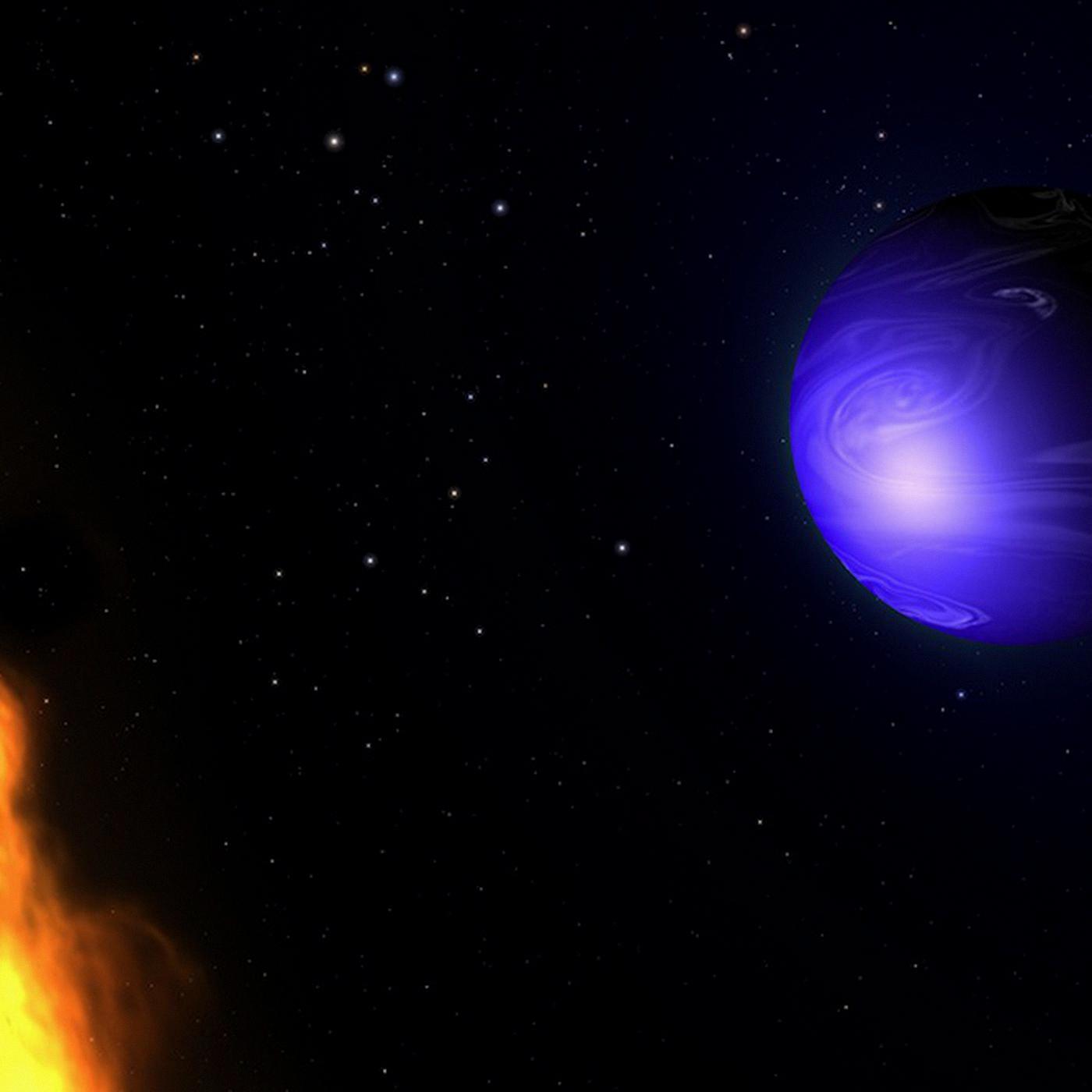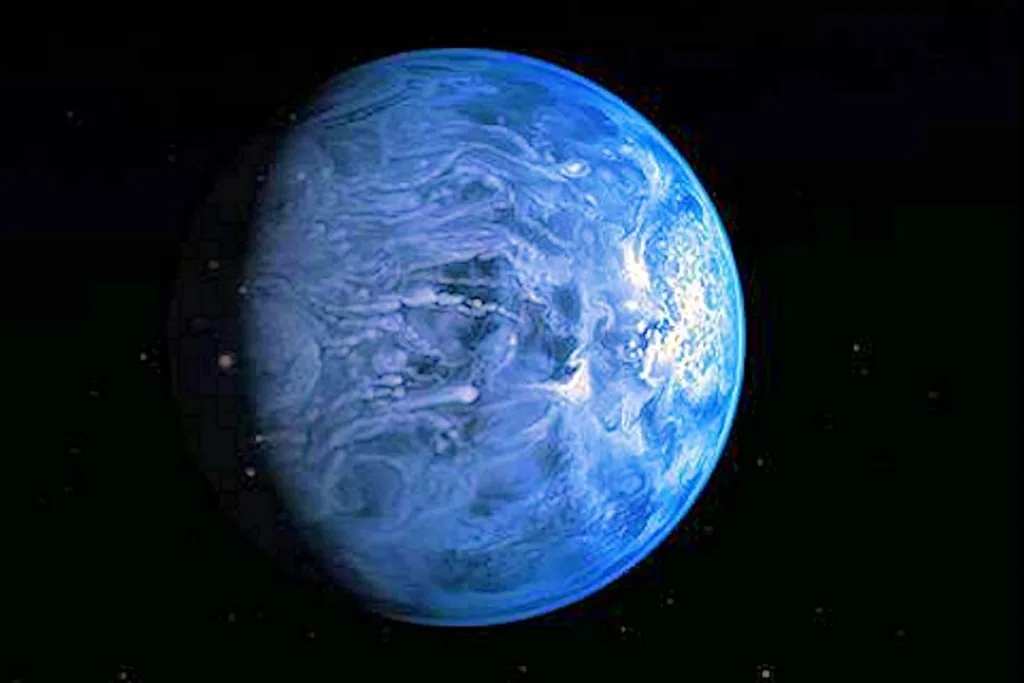HD 189733 b is a unique planet located just 63 light-years from Earth. It has been dubbed the “blue marble” planet, but it is anything but friendly to life. The planet’s atmosphere has a fascinating blue hue, which scientists believe comes from a rain of molten glass.
To the naked eye, HD 189733 b may seem like a friendly world, but it is a nightmare planet that could easily kill any space traveler who tres to visit it. The extreme weather conditions on this planet are deadly, and it is not a place where any living organism can survive.
HD 189733 b is a gas giant planet that is similar in size to Jupiter. It has a close orbit around its star, which makes it an inhospitable environment for life. The daytime temperatures on this planet can reach over 1,000 degrees Celsius, which is far too hot for any living organism to survive.
According to Nasa, the blue color in the atmosphere of HD 189733 b comes from a rain of molten glass. This is a truly fascinating phenomenon, and it shows that there can be a lot of surprises waiting for us in the universe.
The weather on HD 189733 b is not the only extreme condition that makes it an unfriendly planet. The planet’s atmosphere is also exposed to high levels of radiation, which could easily kill any living organism that tries to survive there.
HD 189733 b is a fascinating planet that rains glass. Its blue hue, which comes from a rain of molten glass, makes it a unique place in the universe. However, the extreme weather conditions and high levels of radiation make it an inhospitable environment for life. Despite this, the discovery of this planet shows that there is still much to be explored and discovered in the universe.
How Far Is The Planet That Rains Glass?
The planet that rains molten glass is located at a distance of approximately 63 light-years from Earth. This distance is equivalent to about 370,800,000,000,000 miles or 596,000,000,000,000 kilometers. It is important to note that this distance is vast and currently, our technology is not advanced enough to send spacecraft to explore this planet in person. Nonetheless, scientists have been able to study the planet from afar using telescopes and other instruments.

What Is The Nightmare Planet?
The nightmare planet is kown as HD 189733 b. It is a planet located outside of our solar system and is described as a killer you never see coming. Despite appearing bright blue to the human eye, it is not a friendly planet to space travellers. The weather on this planet is extremely deadly and inhospitable. The planet experiences extreme temperatures, with winds that reach up to 8,700 kilometers per hour, which is seven times the speed of sound on Earth. Additionally, HD 189733 b is constantly bombarded by deadly radiation from its neighboring star, which can strip away its atmosphere over time. HD 189733 b is a treacherous planet that is unfit for human habitation due to its extreme weather conditions and hostile environment.
Which Planet Rains Metal?
The planet that is known to rain metal is WASP-121b, which is a gas giant exoplanet located approximately 855 light-years away from Earth. The planet’s atmosphere is extremely hot, with temperatures reaching up to 4,500 degrees Fahrenheit, making it one of the hottest known exoplanets. The researchers have suggested that the planet’s atmosphere may cntain metal vapors, which can condense and form clouds made of liquid metals, such as iron and magnesium. These metals can potentially rain down on the planet’s surface, creating a unique and fascinating phenomenon never before observed in our solar system. The discovery of this metal rain is a significant step forward in our understanding of the diversity of exoplanets and their atmospheric compositions.
Is HD 189733b Habitable?
HD 189733b is not considered habitable due to its nature as a gas giant planet similar to Jupiter. The harsh conditions on the planet, including extremely high daytime temperatures of over 1,000C, make it an inhospitable environment for any potential living organisms. As a gas giant, it lacks a solid surface, which is necessary for life as we know it to exist. In addition, its close orbit around its sun further limits the possibility of life, as it is subject to intense radiation and strong gravitational forces. Therefore, HD 189733b is not a candidate for habitability.

Conclusion
The discovery of the planet HD 189733 b and its molten glass rain is a fascinating yet terrifying revelation in our search for extraterrestrial life. This blue marble alien world may seem picturesque from afar, but its deadly environment is not hospitable to any kown form of life. The rain of molten glass is a result of the extreme temperatures and high winds on the planet’s surface, making it a hostile and inhospitable place. It serves as a reminder that the universe is vast and diverse, and not all planets are suitable for life as we know it. Nonetheless, the findings of this research provide valuable insights into the complex and diverse nature of our universe, and it highlights the importance of continuing our search for other habitable worlds beyond our own.
